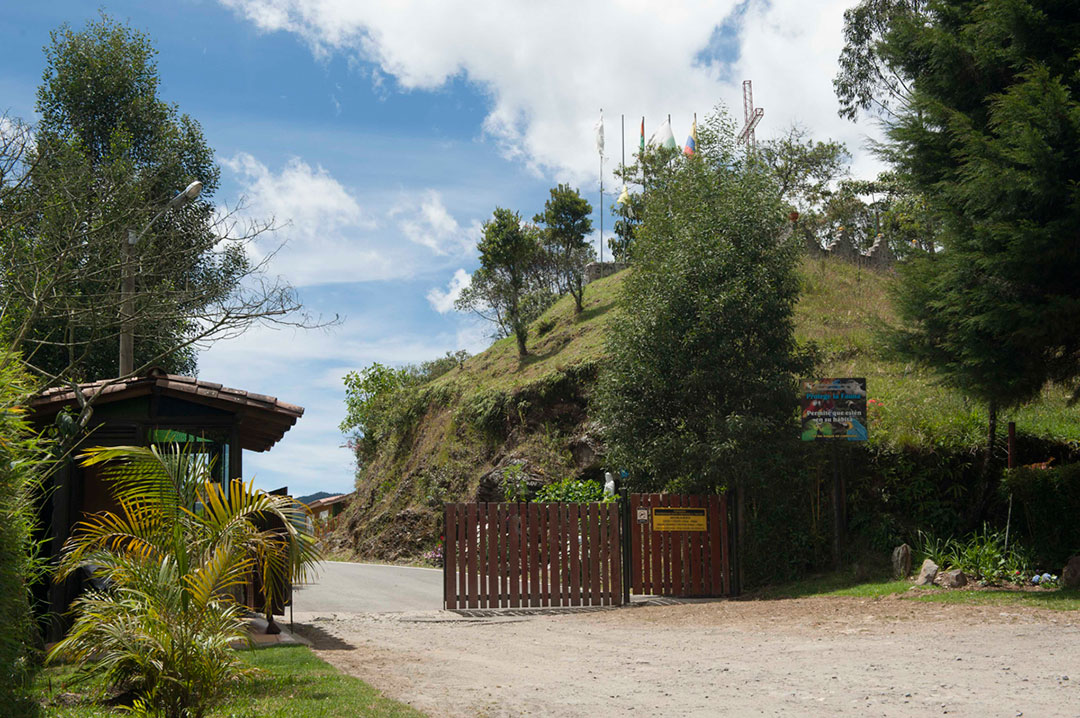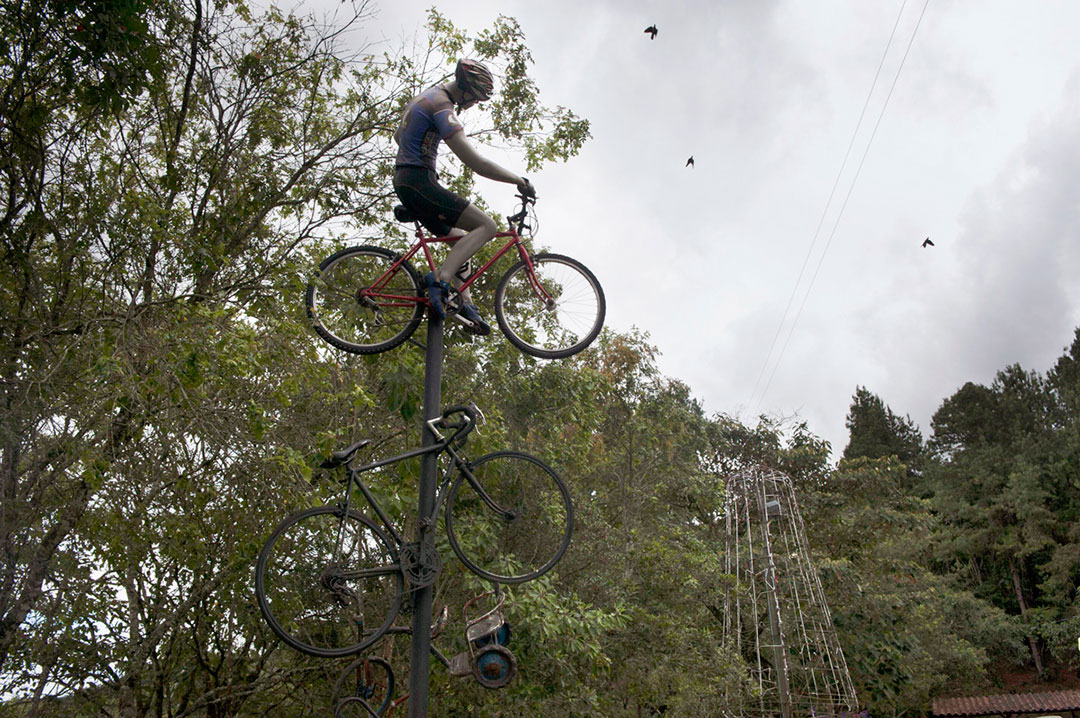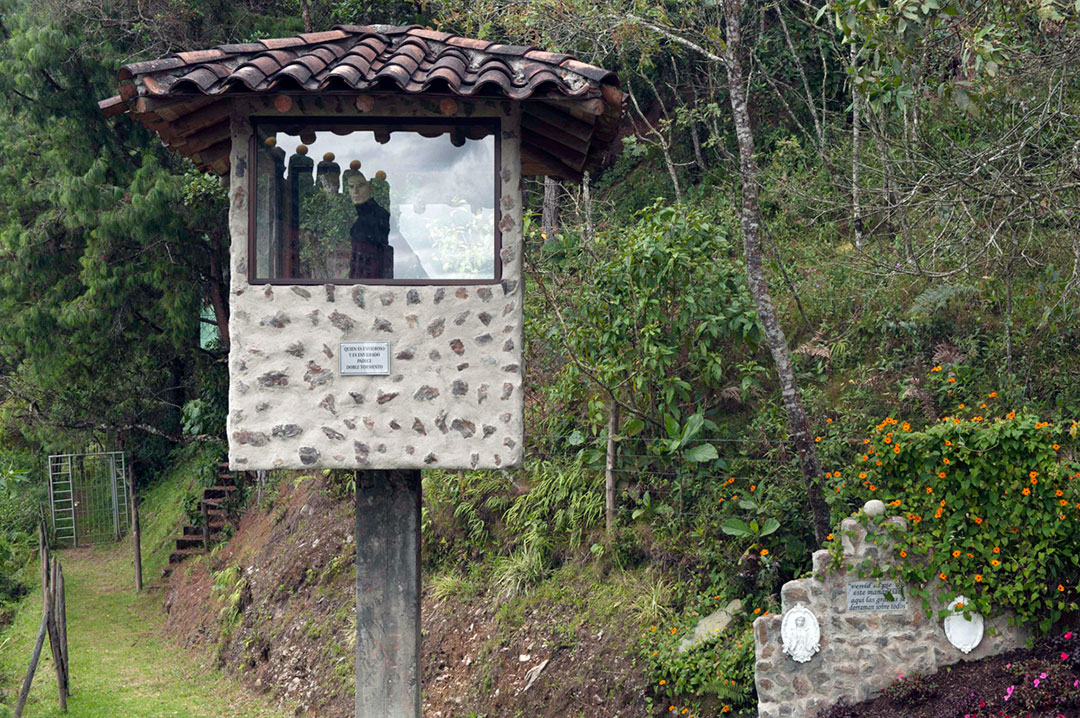The Honey Valley rests southeast of Medellin in the mountainous outskirts of the neighboring town, Envigado. Tracts of native forest still cover large sections of the area, although new home construction has felled much during the past few years. In the forests, you find armadillos, sloths and large, iridescent butterflies.
Medellin Cartel boss Pablo Escobar chose an area high above this valley in the cool mountains for his self-designed prison in 1991 as part of an agreement he worked out with Colombian authorities. By ’91, a decade of building an empire of enemies was causing the collapse of Escobar’s life around him. A vigilante group named Los Pepes (short for “People Persecuted by Pablo Escobar”) was pursuing him and would eventually assassinate more than 300 of his associates and family. He was at war with the Cali Cartel. He had seen fellow drug lords like Carlos Lehder extradited to the United States, others like the Ochoa brothers turn themselves in to serve time in Colombian prisons and still others like Gonzalo Rodriguez Gacha, alias “El Mexicano,” die in gun battles with the police. His daughter Manuela had been injured in a bombing of his home. He was a man succumbing to the constant pressure of being hunted.

Six months of secret negotiations brought a deal with the Colombian government. Escobar would go to jail — the prison, however, would be built to his specifications on three hectares of land that he had bought in preparation of a possible agreement with the state. As part of the arrangement, he would also have the right to choose his guards. Always very close with his family, the location allowed him a direct sightline to his family’s home and it is said that he mounted a telescope to be able to see his daughter while he talked with her on the phone.
Entering prison not only gave Escobar protection from possible assassins, but also from what he was most afraid of: extradition to the United States. He feared a system in which prison guards and judges could not be easily bribed. One of his mottoes was "Better a grave in Colombia than a cell in the U.S."
In return, Colombia would have Escobar in prison for five years and rid themselves of a national headache and embarrassment, even if only temporarily. Escobar’s bombings and bribes had pushed the state to the point of collapse in the 1980s; his imprisonment would be a landmark. The arrangement also brought an end to the costs and time invested in the endless pursuit of the cartel boss. So on June 19, 1991, Escobar arrived at the prison in a helicopter to serve his time.
The compound was called “La Catedral,” or The Cathedral. The reference wasn’t religious but a nod towards its grandeur. Unofficially it was called “Club Medellin” or “Hotel Escobar,” and “resort” would be a more apt description of it than “prison.” Escobar’s designs featured a bathroom with a jacuzzi and a bedroom that had a circular, rotating bed. The compound included a soccer field, a discotheque, a doll house for his daughter and its own bar. There was a waterfall. It had cellular phones, radio transmitters and a fax machine to allow him to continue with business, which at its peak brought his cartel $60 million dollars a day and oversaw control of up to 80 percent of the cocaine shipped to the United States.
While Escobar was living at La Catedral, his family made the trip up from Envigado to visit him three or four times a week, as did friends, professional soccer players and prostitutes when he wished. He hosted drug and booze-fueled parties with regularity. Authorities allowed him to run the place — until, that is, he ordered four of his lieutenants tortured and killed at the compound in a dispute over money.
It was then that the government decided things had gone too far and decided to move Escobar to a military installation. Two unarmed officials — a deputy justice minister and the chief of the national prison system — came to inform the cartel boss of the changes. They told him that it was a temporary move until La Catedral could be made more secure.
Escobar balked. One of his associates, nicknamed “Popeye,” repeatedly pointed a submachine gun at the minister. The officials were told that they would be leaving La Catedral dead. As Escobar and several other drug traffickers debated their murder, two explosions and gunfire bursts rang out. Colombian soldiers had arrived from Bogota to capture Escobar and rescue his hostages.
On July 22, 1992, while the hostages were rescued, Escobar escaped with most of his men, melting into the mountain behind his cathedral. Exactly how he was able to do so remains an open question. He had bribed his way to the highest levels of Colombia’s military, political and judicial structures; his easy escape suggested to many the complicity of his guards and the government soldiers. The cartel boss had stayed only 13 months at La Catedral. A YouTube video recorded by a journalist shows the compound immediately after his escape, offering a sense of the luxury in which he passed his time there:
Escobar’s escape was a national embarrassment for Colombia, which turned to the United States for help in mounting a massive manhunt for him. Members of the U.S. Delta Force and Navy SEALs joined a 600-member Special Operations unit of the National Police of Colombia known as the Search Bloc to hunt for “Don Pablo.” Los Pepes joined the pursuit as well and were fed information by the Search Bloc to carry out extrajudicial killings; journalist and author Mark Bowden writes in his book Killing Pablo that the United States also supplied information to Los Pepes, although his allegation has been contended by the U.S. government.
On the lam, Escobar spent every night in a different safe house. He could never speak on the phone for more than three minutes. Six million dollars were offered for his capture. Seventeen months later, a day after his 44th birthday, he would be dead. Tracked down after staying on the phone too long with his son, Escobar was shot on a rooftop in Medellin’s Los Olivos neighborhood by members of the Search Bloc.
Like many of the other properties formerly owned by Escobar that still dot Medellin’s cityscape, La Catedral lay vacant for many years as the city ignored it. Bathtubs, pipes, tiles and roof materials were stripped; many of the homes in the El Salado neighborhood of Envigado are made with building materials from the prison. Rumors of buried bins filled with millions of dollars enticed thousands of hunters, including soldiers and police — one treasure-seeker even brought a psychic to aid in the search. Walls were dismantled, the grounds dug up. Not a dollar was ever found. Frustrated in their attempts, treasure hunters often left with a brick or other souvenir of the prison. In this way, La Catedral was slowly carried away back down the mountain during the first decade after Escobar’s escape. Eventually, little was left beyond the foundations.
The property came into the hands of the city of Envigado, and in 2007, a group of Benedictine monks from the Benedictina Fraternidad Monastica Santa Gertrudis arrived at the site for study and prayer, living something close to a hermitic existence. They built a chapel, living quarters, a cafeteria and a library. The city eventually ceded the entire land to them so that they could build an asylum for the poor and elderly of Envigado. Construction continues today.

To arrive at La Catedral, you pass scattered country homes on the road up the mountain, either in car or by walking an hour from the last stop on the bus line. On weekends, the climb is filled with mountain bikers. The first encounter with Escobar’s era as you approach the compound is a preserved concrete lookout tower a few hundred meters below the main building complex. The last stretch before arriving at the prison levels out after the steep climb, bringing you to the access gate.


From the gate, the main road empties into a parking lot where you are greeted by a gray and white cat with a barroom brawl nose, who now watches over the grounds instead of 40 prison guards. The parking lot is built over the former soccer field. It’s here that Escobar held court, conducting trials of his subordinates that often resulted in murders and tortures, and where he would play soccer with stars from the Colombia national team.
From the parking lot, you have also your first chance at the view from La Catedral that looks out over the full expanse of Medellin and stretches all the way to Quitasol Mountain at the northern end of the valley. Rising up behind the former soccer field is a completely new group of buildings without public access — housing and facilities for the elderly residents of La Catedral, who started arriving about a year ago.



Throughout the compound, adornment abounds: mosaic work, Gaudi-like molded railings, last year’s Christmas decorations and bright paintings of flowers, animals, monks and peasants. Colorful plantings fill the grounds, tended by a gardener with a transistor radio and machete. It’s as if the monks believe vibrant, gaudy decoration might help counterbalance the atrocities that occurred here 20 years ago. Construction has started on a small planetarium in a former watchtower in the northeast corner of the compound and also on an events center and a museum, the future contents of which the monk who answered my questions about plans for La Catedral did not know.

Returning to the access gate and up a separate path that branches off from it, you arrive at the new main monastery of the Benedictine monks sitting on the hill above the facilities built for the elderly residents of the asylum. It’s a wooden log structure that feels disorientingly Germanic and pipes out Gregorian chants. Nearby, a monument of stacked mountain bikes and an oratory plaque serves as a shrine for the bikers who make it up the mountain. It sits close to a small plazoleta overseen by a sculpture of the pieta, a large metal cross and five flagpoles.



Despite the aggressive rebuilding, reminders of Escobar’s residence remain everywhere. Plaques dot the grounds making not-subtle-at-all allusions to its famous denizen. One reads: “He who kills another without authority or just cause, condemns himself to death.” A restored prison watchtower complete with a watchman mannequin bears another: “He who is envious and is envied suffers a double torment.” A photograph of Escobar sits overlooking the main parking lot, part of a montage of images mostly of the newly built asylum. This photograph is a reproduction of the only known image of Escobar at La Catedral. In it, he holds onto window bars and wears a Russian wool hat, given to him by his mother after her visit to Moscow to make sure her son would keep warm during the cold nights up on his mountain.


Near this large photograph we see a preserved area of ruins. Ferns line concrete stairs leading to the collapsed foundations of one of Escobar’s bedrooms. Another plaque offers perhaps more information than it intends: “The ruins of what was one of the pleasure bedrooms, with a round and rotating bed, of Senor Pablo Emilio Escobar Gaviria.”
The plaque, in its detail, seems to reveal something of Colombia’s current relationship with Escobar. It’s generally one of condemnation — except in the poor neighborhoods that Escobar literally built or donated soccer fields and hospitals to — but it’s a condemnation lined with curiosity. A fictional television show called Pablo Escobar: Boss of Evil has been very successful. Tours of Escobar-related sites in Medellin have been popular. Now that the city is one of the safest in Latin America and now that more than two decades have passed since Escobar terrorized the general public with a war against the state, it seems some Colombians temper their condemnation not only with curiosity, but perhaps with just a touch of pride that the evil genius was one of their own.

Tom Griggs is a photographer, writer, editor and educator based in Medellin, Colombia. He teaches between several universities and runs the site fototazo.